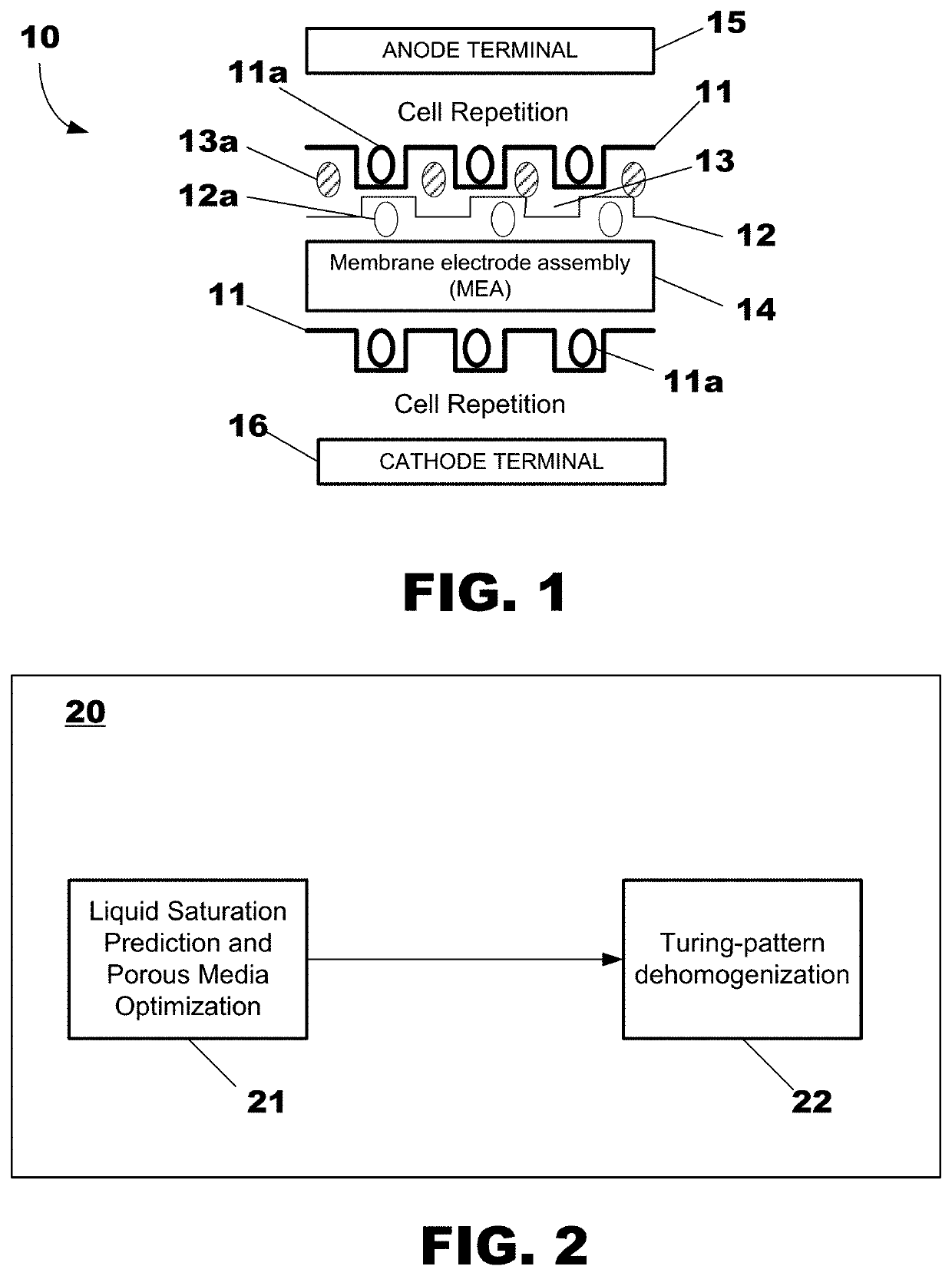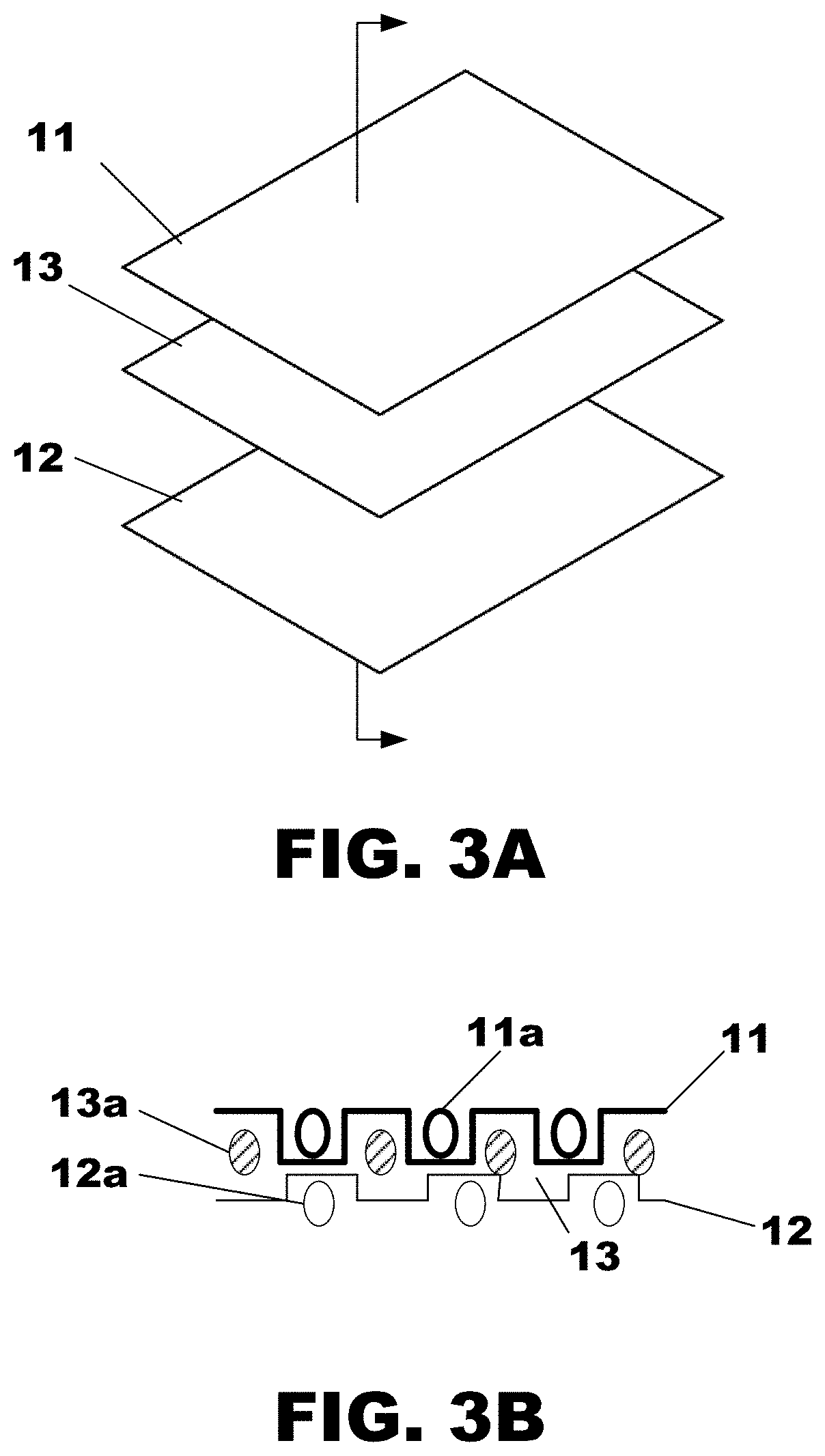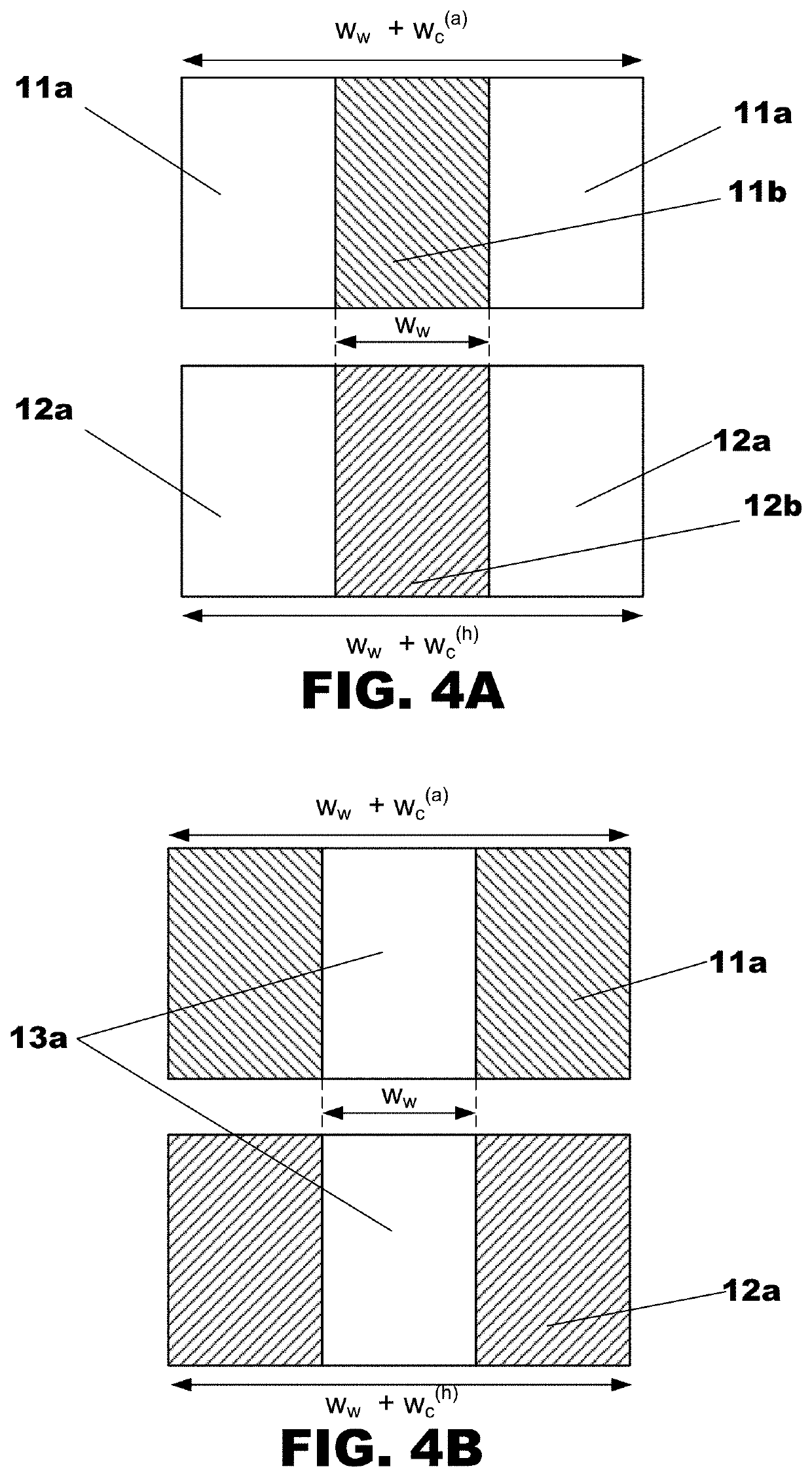Method of predicting liquid regions and vapor regions in bipolar plates of a fuel cell
a fuel cell and bipolar plate technology, applied in the direction of fuel cells, electrical appliances, electrochemical generators, etc., can solve the problems of inefficient fc stack performance, narrow or completely blocked cooling channels, and inconvenient fc stack cooling, so as to reduce the size of the fc, minimize flooding, and maximize performance
- Summary
- Abstract
- Description
- Claims
- Application Information
AI Technical Summary
Benefits of technology
Problems solved by technology
Method used
Image
Examples
Embodiment Construction
[0041]As illustrated in FIG. 1, a fuel cell 10 comprises a first bipolar plate comprising a first stamped metal plate or layer 11 (serving as the anode), a second stamped metal plate or layer 12 (serving as the cathode), and an MEA membrane 14 interposed therebetween. An anode terminal electrode 15 is electrically connected to the anode 11, while a cathode terminal electrode 16 is electrically connected to the cathode 12.
[0042]The first stamped metal plate or layer 11 has a plurality of independently formed air fluid flow networks 11a, and the second stamped metal plate or layer 12 has a plurality of independently formed hydrogen fluid flow networks 12a. Through the stacking of the first stamped metal plate 11 and the second stamped metal plate 12, a coolant layer 13 comprising a plurality of coolant flow networks 13a is defined. In this way, the coolant fluid flow network configuration 13a is dependent upon the independently-formed air networks 11a and hydrogen channels 12a.
[0043]...
PUM
| Property | Measurement | Unit |
|---|---|---|
| microstructures | aaaaa | aaaaa |
| concentration | aaaaa | aaaaa |
| permeability | aaaaa | aaaaa |
Abstract
Description
Claims
Application Information
 Login to View More
Login to View More - R&D
- Intellectual Property
- Life Sciences
- Materials
- Tech Scout
- Unparalleled Data Quality
- Higher Quality Content
- 60% Fewer Hallucinations
Browse by: Latest US Patents, China's latest patents, Technical Efficacy Thesaurus, Application Domain, Technology Topic, Popular Technical Reports.
© 2025 PatSnap. All rights reserved.Legal|Privacy policy|Modern Slavery Act Transparency Statement|Sitemap|About US| Contact US: help@patsnap.com



